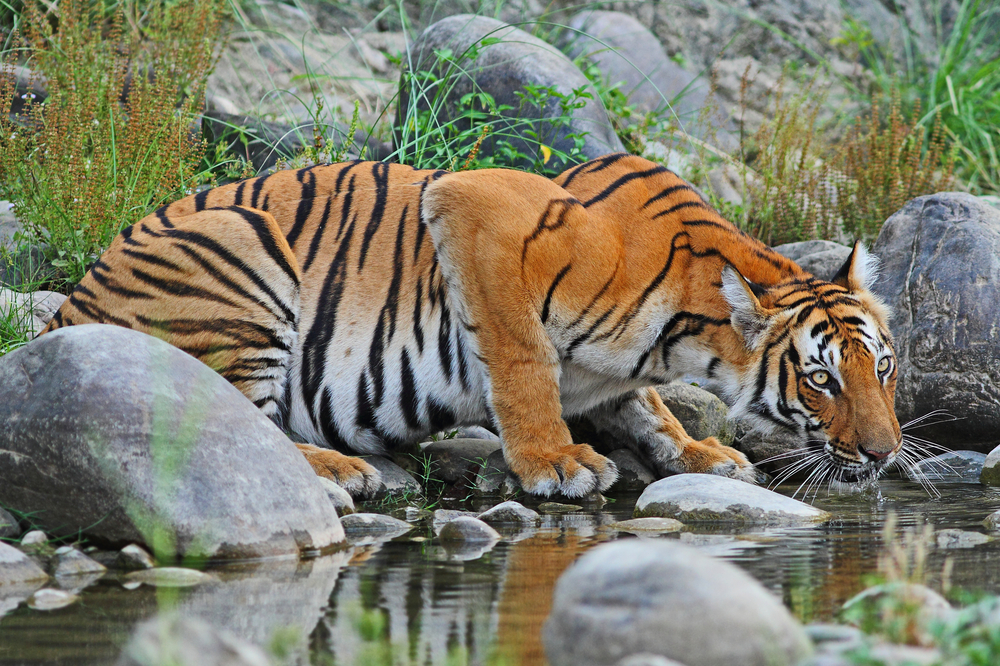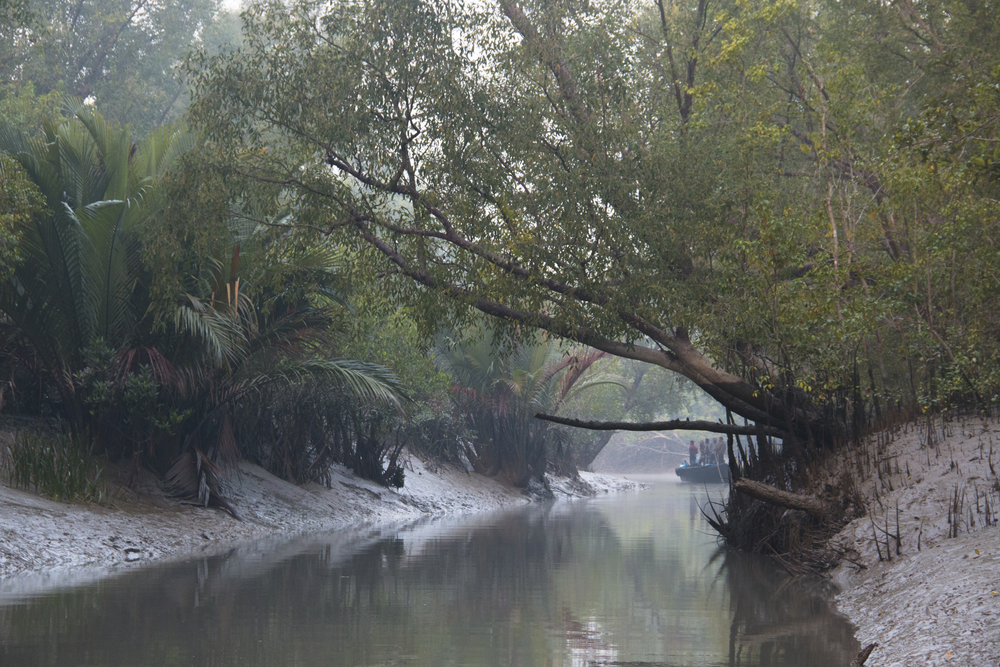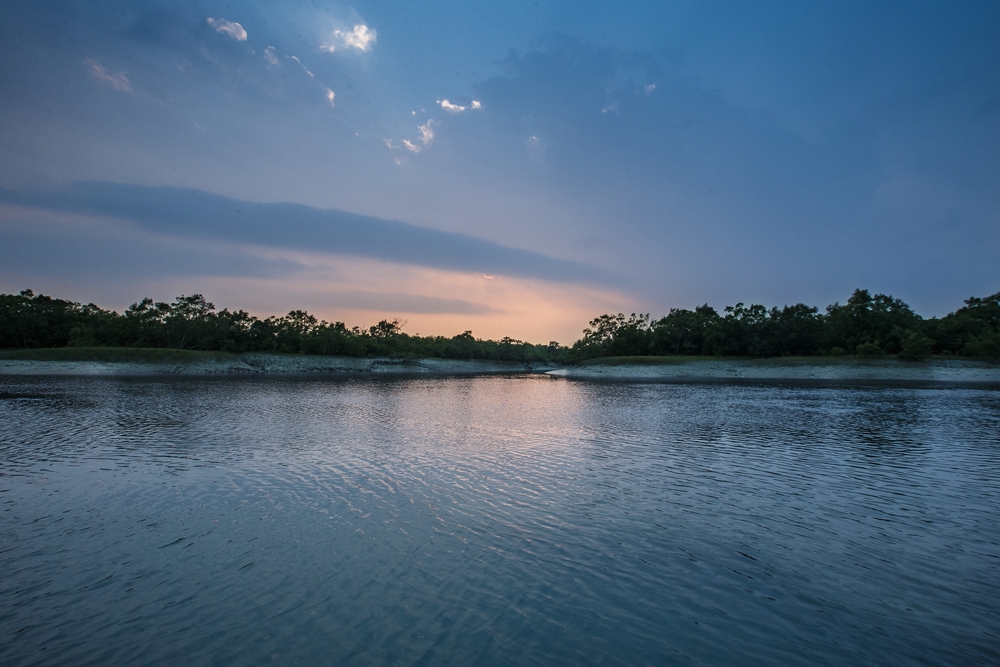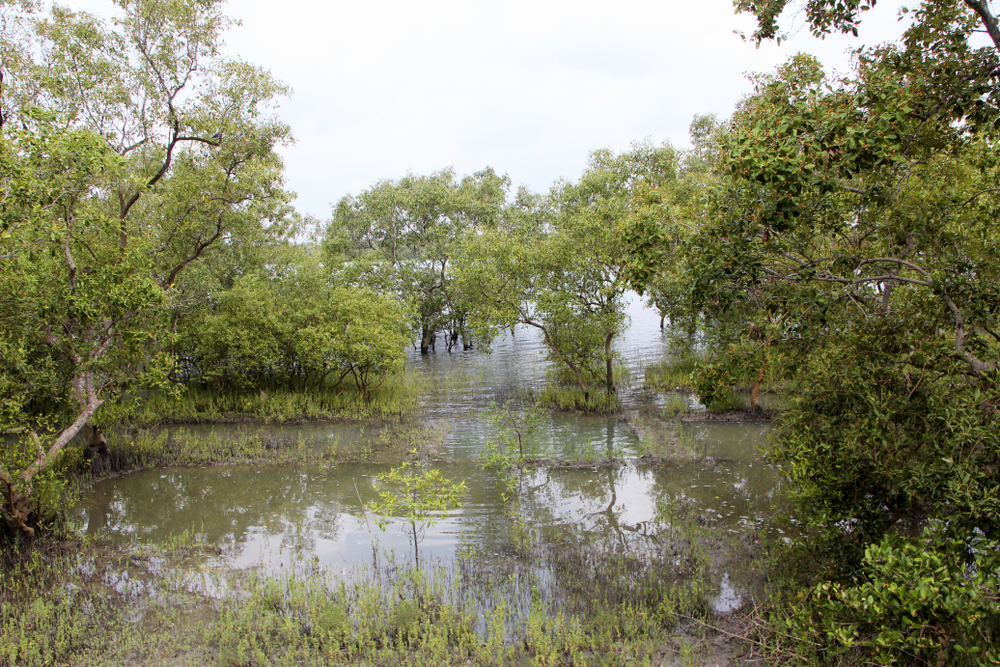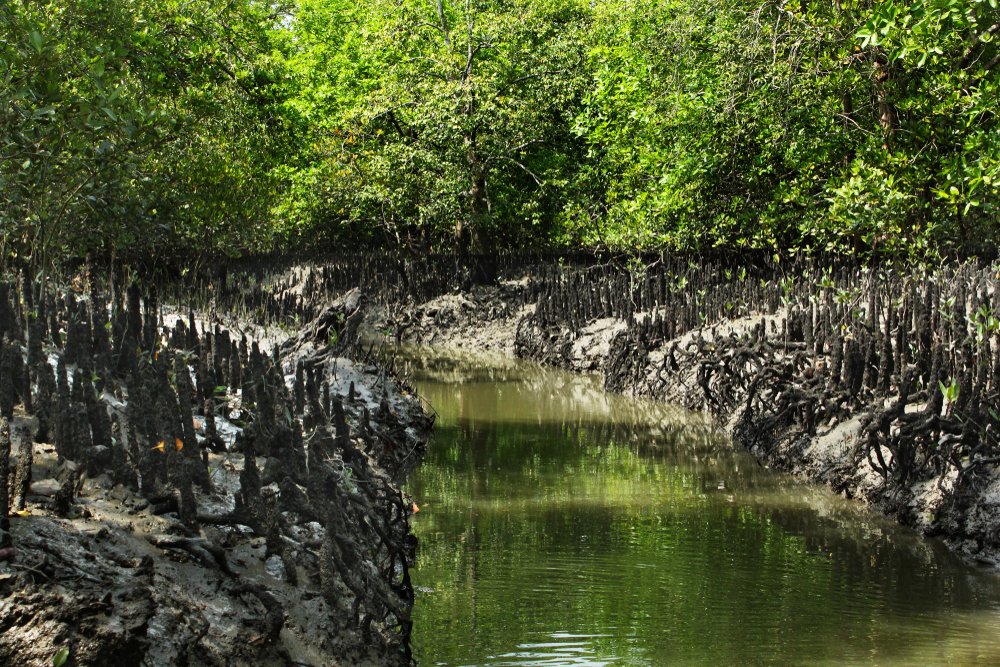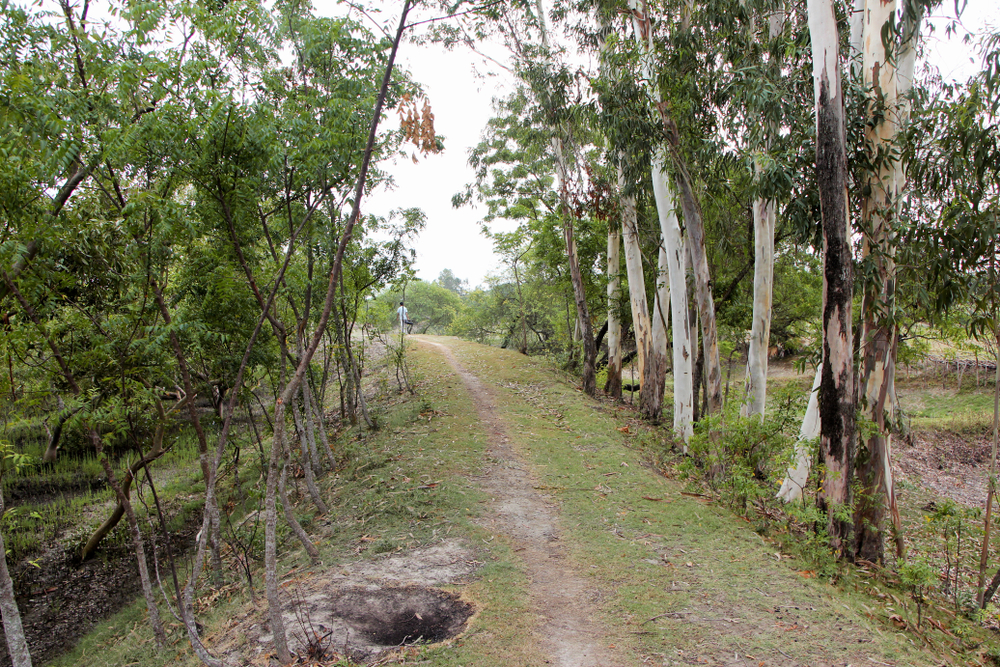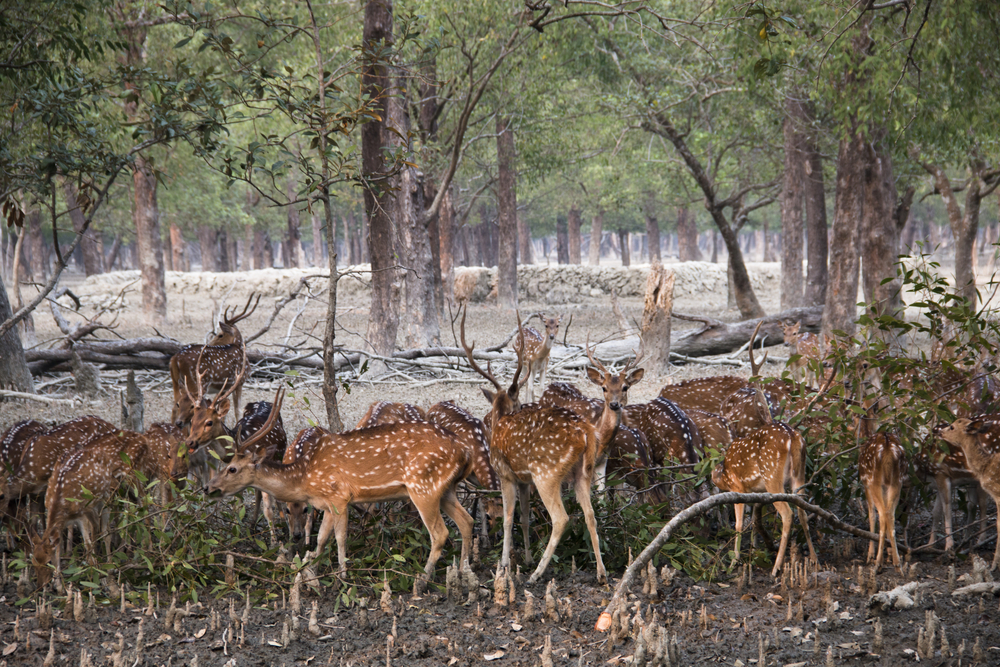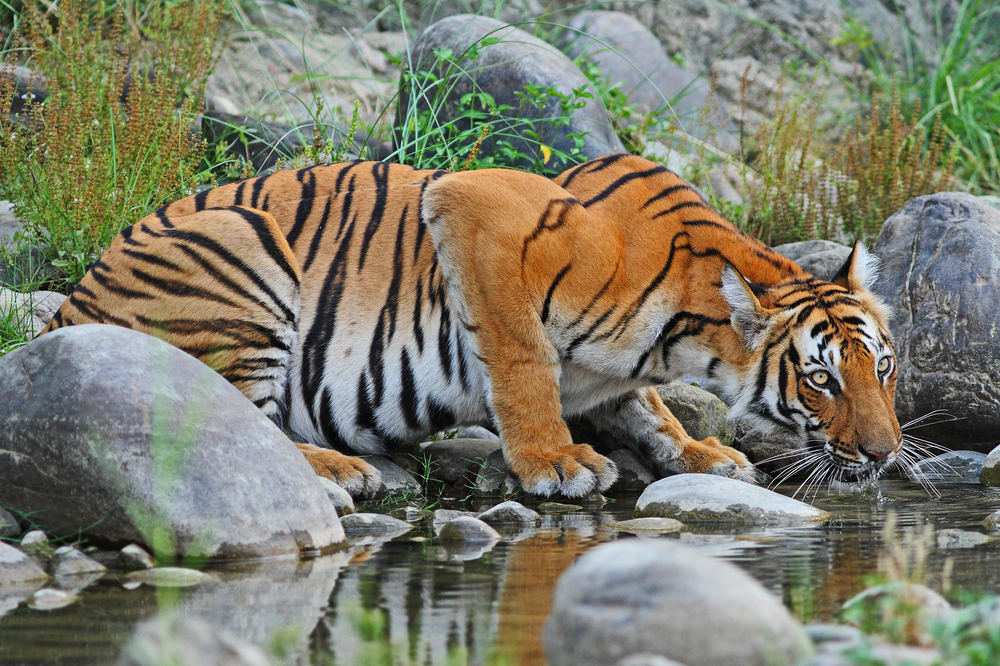Sundarban National Park is located on the eastern side of India ialong the border of Bangladesh. The national park covers an area of 513.55 square miles (1,330.10 sq km).
The national park is part of the largest mangrove forest in the world. The lucious grove is pervasive across the Ganges Delta. The collective area is one of the largest tiger reserves in the world.
The delta terrain has an average elevation of only 24.6 feet (7.5 m) with the Ganges River traversing through the terrain creating the delta and 54 different islands.
Although the Ganges River is one of the main sources of the delta and mangrove forests, there are a total of seven key rivers combined with a number of smaller waterways feeding the delta landscape. The tide ranges from 9.8 to 26.2 feet (3 to 8 m) with the typical being more on the lower side. Of course the low tide increases the size of the islands and exposes more of the terrain that is sometimes under water.
When the tides are low this exposes many of the mudflats throughout the delta. The name of the park is derived from the Sundari tree which accounts for the majority of the forested delta. This lucious mangrove forest is home to over 400 Bengal tigers making it one of the largest tiger reserves in the world.
The tiger is not the only predator species. Visitors can hope to see leopard cats, fishing cats, jungle cats, and foxes. Some of the other popular species include mongoose, flying fox, macaques monkeys, and chital. The area is also a haven for an abundance of bird species. Some of the more exotic species of wildlife include the king cobra, chameleons, saltwater crocodiles, and the Ganges river dolphins.
Photos
Things to See
Things To Do
Exploring the mangrove forest is the primary activity and the primary way to do that is through a boat safari. There are chances to get out and about and discover other parts on foot.
Park Protection
Sundarban National Park was created to protect the rich tiger habit and a portion of the largest mangrove forest from around the world. The park protects the habitat of the bengal tiger while also being home to the renowned saltwater crocodiles. The park and larger surrounding reserve were established to protect the wildlife and diverse ecosystem of the region.
Sources
- Britannica, Sundarban National Park, https://www.britannica.com/place/Sundarbans-National-Park, retrieved October 2021.
- India, Sundarban National Park Tourism, https://www.india.com/travel/sundarbans-national-park/, retrieved October 2021.
- Sundarban National Park, Park Site, https://www.sunderbannationalpark.in, retrieved October 2021/.
- Tour My India, Sundarban National Park, https://www.tourmyindia.com/wildlife_sancturies/sunderban-national-park.html, retrieved October 2021.
- UNESCO, Sundarban National Park, https://whc.unesco.org/en/list/452/, retrieved October 2021.
